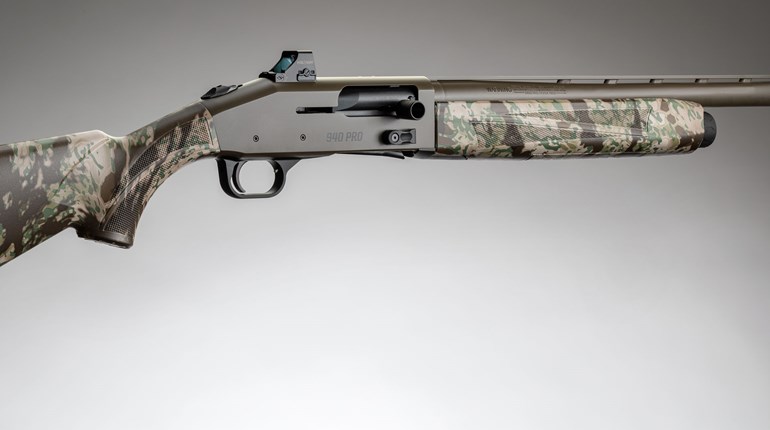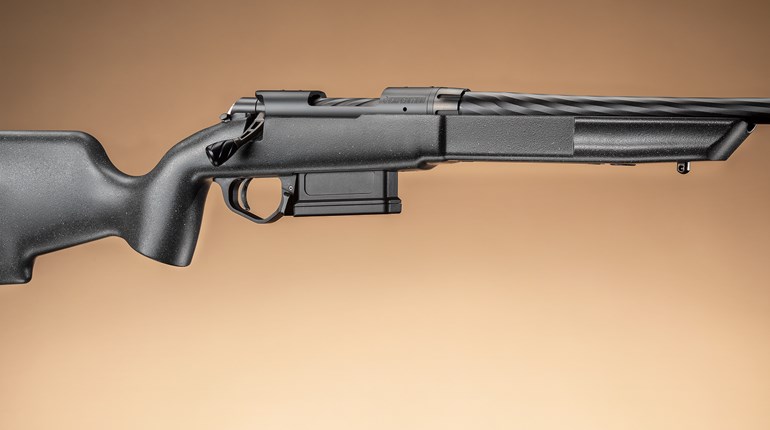
Massive firepower and ammo choices ranging from slugs to less-lethal have kept the 590A1 in the military’s arsenal through present-day.
Right now we are experiencing a golden age of defensive shotguns, what with the proliferation of bullpup-style, removable- and multiple-magazine shotguns, sub-gauges, new-and-improved gas systems and everything in between. Still, I find myself coming back to a couple of tried-and-true classics. One is Mossberg’s venerable Model 590A1. But, before I get into its modern details, a brief look at its history is in order.
The 590 is an evolution of the Model 500, and since 1961 the O.F. (Oscar Frederick) Mossberg company has sold more than 11 million 500s, making it the most popular shotgun of all time, if not one of the most sold guns in any category, period. Why? Because it’s inexpensive and it works. Every time. (Or 99.9 percent of the time, anyway.)
The 500 was spawned from the design hand of Carl Benson, who borrowed from prior concepts combined with his own to produce a utilitarian slide-action shotgun that could be tailored for nearly any task via easily swappable barrels, stocks, tubular magazines and myriad accessories, both factory and aftermarket.
Seventy years ago, the idea of utilizing a steel barrel extension to receive the brunt of pressure from the fired shell, thereby allowing the non-force bearing receiver to be made of lightweight—and relatively inexpensive— aluminum was novel. It lowered the cost of production while maintaining the gun’s integral strength.
Other notable features of the 500 include the tang-mounted safety that’s inherently ambidextrous, a single, robust locking-lug bolt and dual extractors. The first big improvement came in 1970, when, after Remington’s patents expired, Mossberg added dual action bars to provide twice the reliability of the single bar in the linkage between the fore-end and bolt assembly. The improved design mitigated binding and was less prone to failure. Mossberg later added a 3-inch chamber.
During the 1970s, Mossberg submitted its Model 500 for official military consideration, but it failed the government’s MIL-SPEC 3443E protocol. However, the accompanying report specified why. Although Mossberg built some 500s to that specification, it ultimately decided to keep the model like it was, thereby maintaining costs and its margins so it could continue dominating the pump-gun cate-gory. Instead, it produced the Model 590 in 1987 to meet military specifications.
In essence, the 590 is a model 500 modified in three key areas based on the government’s mil-spec: First, it did away with the plastic tang safety and replaced it with metal. Second, it replaced the plastic trigger guard with a metal one. Third, it replaced the magazine cap with one that would allow cleaning without having to disassemble it. Mossberg calls it a “clean-out cap.” In addition, the 590 wore a 20-inch barrel, Parkerized-metal finish and a six-round extended magazine. The resulting shotgun met specifications and won lucrative contracts with the U.S. military.
Soon afterward, Mossberg beefed up the 590 to meet the Navy’s special request. The barrel was thickened so it could be slammed in a frigate’s steel door and still shoot straight. A barrel shroud was added, as was an eight-round extended magazine and a bayonet lug. (I don’t know why, but I love the bayonet lug.) The resulting 590A1 was the military shotgun of choice until Benelli’s semi-auto M4 replaced it in the early 2000s. Yet, for Soldiers, Sailors and the rest of us who don’t trust our lives to a semi-auto—nor have a couple grand in cash laying around—the 590A1 endures.
Today the 590 is as popular as ever, especially among the old-school door-pounders, breachers and Middle East vets who have ever dropped a semi-auto in the sand, rendering it a sweet-looking single shot. A couple years ago, Mossberg released a 590 “Retrograde” model featuring walnut furniture and a Parkerized finish that’s a throwback to the original model.
In total, the firm currently offers 17 variants of the 590A1, from its 590 Shockwave “firearm” to detachable-box-magazine versions and, most recently, optics-ready models. What’s even more significant is the price. For $800, a nine-shot, tough-as-ship-steel, battle-tested 590A1 may be the best bargain in all the defensive-firearm world.




































